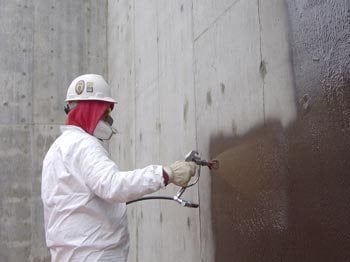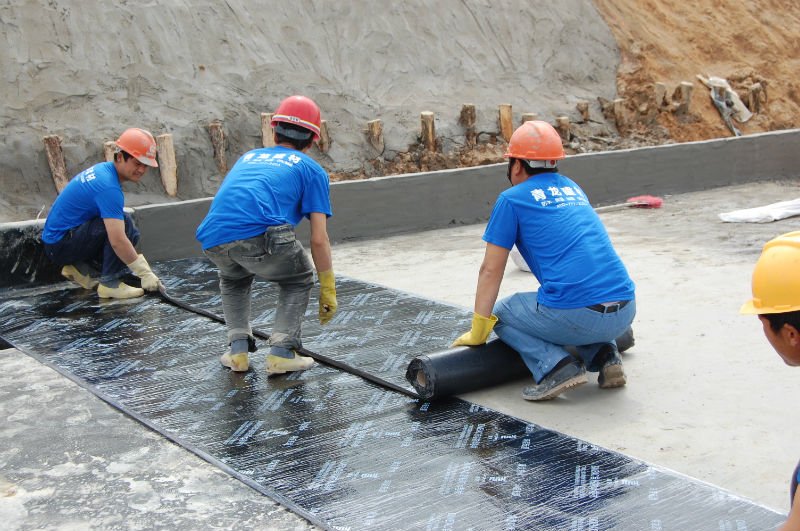Foundation waterproofing Omaha: How Often Should It Be Done?
Wiki Article
Exactly How Waterproofing Functions: A Comprehensive Appearance at Techniques and Technologies
Waterproofing is crucial for shielding frameworks from moisture-related damages. It involves various techniques and innovations that produce obstacles versus water intrusion. Standard methods, such as compacted clay, exist side-by-side with modern-day innovations like liquid-applied membranes. Understanding the subtleties of these techniques is important for efficient application. Nonetheless, the efficiency of any waterproofing solution hinges not only on the methods utilized yet also on recurring maintenance and assessment. What are the essential factors that influence lasting efficiency?Comprehending the Basics of Waterproofing
Waterproofing is a vital process that secures frameworks from water breach, which can lead to significant damage with time. This method includes the application of various materials and methods created to produce an obstacle versus wetness. The main objective is to avoid water from permeating surfaces, which can cause degeneration, mold growth, and architectural instability.Various variables influence the choice of waterproofing technique, consisting of the kind of framework, its location, and environmental conditions. Recognizing the physics of water activity and the homes of various products is vital in choosing an efficient waterproofing solution.Effective waterproofing not only safeguards buildings but also enhances their durability and integrity. Commonly, it is incorporated right into the layout stage of construction to guarantee complete defense. As recognition of water-related problems expands, the relevance of recognizing waterproofing fundamentals comes to be progressively clear to designers, contractors, and homeowner alike.Standard Waterproofing Techniques
Conventional waterproofing techniques have actually been utilized for centuries, counting on tried and true strategies and materials to guard frameworks from water damage. Among the earliest methods includes the usage of clay, which, when compressed, produces a natural barrier against moisture. In addition, bitumen, a sticky, black product acquired from petroleum, has actually been employed for its waterproof properties, typically related to roofings and foundations.Another strategy includes the application of lime-based plasters, which give a breathable layer that permits dampness to leave while protecting against water access. Thatch roof covering, a typical technique still seen in some cultures, offers superb waterproofing as a result of its tightly loaded straw layers.Moreover, using stone and block has been popular, as these products are inherently resistant to water when appropriately set up. In general, traditional waterproofing approaches emphasize the value of choosing ideal products and building and construction practices to improve sturdiness against water intrusion.Modern Waterproofing Technologies
Advancements in contemporary waterproofing innovations have actually changed the way frameworks are shielded from water damages. Cutting-edge approaches such as liquid-applied membrane layers and innovative sealants have actually boosted the performance and flexibility of waterproofing services. These technologies permit seamless application, decreasing the danger of leakages and guaranteeing detailed protection over complex surfaces.Moreover, the integration of smart innovations, such as moisture sensing units and automated monitoring systems, allows real-time assessment of waterproofing efficiency. This aggressive strategy helps with prompt maintenance and minimizes lasting repair service costs.Additionally, innovations in spray-applied coverings use fast application and outstanding bond, adapting to different substrates while supplying robust protection. Strategies like polymer-modified systems better improve flexibility and durability, making them appropriate for varied environments. Overall, modern-day waterproofing technologies not only reduce water breach however additionally add to the durability and sustainability of structures, marking a significant shift in the industry.Materials Used in Waterproofing
The performance of waterproofing services greatly depends on the products used in their application. Numerous products are used to produce barriers against water ingress, each with special residential properties fit for different atmospheres. Generally utilized materials include membranes, coverings, and sealants.Liquid-applied membranes, commonly made from polyurethane or acrylic, develop a seamless barrier that adjusts to intricate surfaces. Sheet membrane layers, normally built from rubber or polycarbonate, deal sturdiness and are optimal for bigger areas. Furthermore, cementitious waterproofing products, composed of cementitious compounds, give exceptional attachment and flexibility.Sealants made from silicone or polyurethane are important for joints and joints, making certain thorough protection. Sophisticated materials, such as geo-composite membranes, integrate numerous functions, enhancing efficiency. In general, the selection of waterproofing products is essential in attaining lasting and reliable water resistance, tailored to certain project requirements and environmental conditions.
Common Applications of Waterproofing
Waterproofing plays a crucial role in numerous industries, making certain the longevity and stability of structures. Typical applications consist of household solutions that safeguard homes, commercial framework that safeguards businesses, and commercial setups that need durable security versus moisture. Comprehending these applications highlights the relevance of waterproofing in keeping both security and capability throughout various environments.Residential Waterproofing Solutions
Lots of house owners face obstacles with dampness breach, making efficient residential waterproofing remedies vital. Numerous approaches exist to address this issue, including exterior and interior waterproofing systems. Interior remedies frequently involve the application of sealants and layers to basement wall surfaces, which aid avoid water infiltration. Outside techniques normally consist of the installation of drainage systems and water resistant membranes that divert water away from the foundation.Additionally, house owners might consider sump pumps to eliminate water build-up and dehumidifiers to manage humidity levels. Appropriate grading and using gutters also play an essential duty in handling water circulation around the home. By applying these approaches, house owners can considerably decrease the risk of water damages and mold development, making certain a completely dry and safe living setting.
Commercial Infrastructure Defense
Effective waterproofing services play a vital duty in the protection of business facilities. Water Solutions. These strategies are essential for securing buildings, vehicle parking structures, and bridges from water damage, which can compromise architectural stability and result in expensive repair work. Typical applications include the installation of membranes, finishings, and sealants that create obstacles versus wetness seepage. Areas such as cellars, roofs, and outside wall surfaces are commonly prioritized to assure longevity and resilience. Furthermore, waterproofing systems can improve power efficiency by stopping water-related concerns that may cause mold and mildew growth and wear and tear. By applying robust waterproofing actions, property owners can shield their financial investments and keep functional efficiency, inevitably adding to the general sustainability of commercial facilitiesIndustrial Applications Introduction
While different sectors deal with special challenges, the requirement for reputable waterproofing options continues to be a consistent in industrial applications. Industries such as manufacturing, building and construction, and energy usually come across environments where moisture direct exposure can jeopardize architectural honesty and operational effectiveness. In making facilities, waterproofing is critical for securing equipment and materials from water damage. In building, it safeguards structures and basements against groundwater seepage. The power industry depends on waterproofing for the defense of devices in hydroelectric plants and offshore structures. Additionally, food Get the facts handling sectors make use of waterproofing to guarantee health and conformity with safety and security criteria. On the whole, efficient waterproofing solutions are crucial for improving toughness, safety, and productivity throughout different industrial setups.
Upkeep and Long Life of Waterproofing Solutions
Waterproofing remedies are designed to offer lasting security versus dampness invasion, normal maintenance is necessary to guarantee their efficiency and longevity. Routine assessments play a considerable duty in recognizing potential issues such as cracks, peeling off, or signs of water damage. Addressing these issues immediately can avoid more wear and tear and pricey repairs.Additionally, cleaning up the surface of waterproof locations helps eliminate dust and particles that can endanger the integrity of the waterproofing barrier. It's additionally advisable to reapply safety finishes or sealers as advised by manufacturers to maintain suitable performance. Ecological variables, such as UV exposure and severe weather, can affect the lifespan of waterproofing products, making regular assessment essentialRegularly Asked Concerns
Can Waterproofing Be Applied in Winter?
The inquiry of applying waterproofing in winter elevates problems concerning bond and healing. Numerous products might not perform at their ideal in low temperatures, demanding mindful option and factor to consider of details guidelines for reliable application.Just How Long Does Waterproofing Generally Last?
The period of waterproofing performance differs based on materials and ecological aspects. Generally, it can last from 5 to ten years, yet regular maintenance and examinations are important to ensure peak performance and durability.Is Do It Yourself Waterproofing Effective and Safe?
The effectiveness and safety and security of do it yourself waterproofing depend upon numerous factors, consisting of material high quality and application strategy. While some people accomplish sufficient results, others may encounter concerns that you could look here jeopardize long-lasting security and architectural honesty.What Are the Indicators of Failing Waterproofing?
helpful site Signs of failing waterproofing include visible water stains, peeling paint, mold development, stuffy smells, and dampness in wall surfaces or ceilings - Drainage & waterproofing company Omaha. These indications recommend endangered obstacles, necessitating punctual inspection and prospective remediation to protect against further damageJust how Do I Choose the Right Waterproofing Contractor?

Report this wiki page